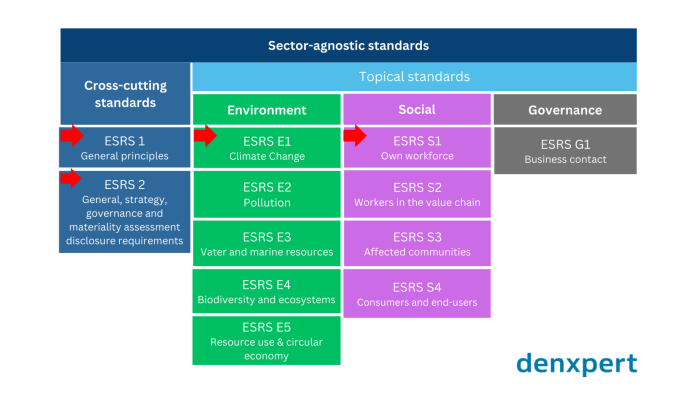What are the 10 uspap standards – Delving into the realm of appraisal practices, the Uniform Standards of Professional Appraisal Practice (USPAP) serve as the cornerstone of ethical and professional conduct within the industry. These ten standards provide a comprehensive framework for appraisers, ensuring the accuracy, reliability, and impartiality of their work.
This guide will explore each of the ten USPAP standards, their key elements, and their interconnectedness, emphasizing the significance of adherence to these principles for maintaining the integrity and credibility of the appraisal profession.
USPAP standards are essential for ensuring that appraisals are conducted with the utmost care and professionalism. They provide a clear set of guidelines that appraisers must follow to ensure that their work is accurate, unbiased, and in compliance with ethical standards.
By adhering to USPAP, appraisers can demonstrate their commitment to providing high-quality appraisals that can be relied upon by clients and other stakeholders.
Introduction

The Uniform Standards of Professional Appraisal Practice (USPAP) are a set of guidelines and rules that govern the appraisal profession in the United States. These standards are developed by the Appraisal Standards Board (ASB) of the Appraisal Foundation and are designed to ensure that appraisals are conducted in a professional and ethical manner.
USPAP is essential to the appraisal industry as it provides a framework for appraisers to follow when conducting appraisals. By adhering to these standards, appraisers can help to ensure that their appraisals are accurate, reliable, and unbiased. This, in turn, helps to protect the public from fraudulent or misleading appraisals.
Purpose of USPAP
The purpose of USPAP is to promote ethical behavior and promote consistency in the appraisal profession. By establishing minimum standards for appraisal practice, USPAP helps to ensure that appraisals are conducted in a professional and ethical manner.
USPAP also helps to protect the public from fraudulent or misleading appraisals. By requiring appraisers to follow specific guidelines, USPAP helps to ensure that appraisals are accurate, reliable, and unbiased.
Significance of USPAP
USPAP is significant because it is the only set of appraisal standards that is recognized by all federal and state regulatory agencies. This means that appraisers who follow USPAP are in compliance with all applicable laws and regulations.
USPAP is also significant because it is the standard that is used by the courts to evaluate the quality of appraisals. This means that appraisers who do not follow USPAP may be held liable for negligence or fraud.
The Ten USPAP Standards
The Ten USPAP Standards
The Uniform Standards of Professional Appraisal Practice (USPAP) are a set of ten standards that govern the practice of real estate appraisal in the United States. These standards are designed to ensure that appraisals are performed in a consistent and ethical manner, and that the results are reliable and accurate.
The ten USPAP standards are as follows:
| Standard | Description |
|---|---|
| 1 | Engagement Acceptance |
| 2 | Performance of Appraisal Services |
| 3 | Reporting |
| 4 | Competency |
| 5 | Independence and Impartiality |
| 6 | Due Professional Care |
| 7 | Appraisal Review |
| 8 | Communication |
| 9 | Recordkeeping |
| 10 | Definitions |
Key Elements of Each Standard
The key elements of each USPAP standard are its purpose, requirements, and compliance guidelines. These elements provide a framework for understanding the intent and application of each standard.
The purpose of a standard is to establish the overall objective and scope of the standard. It explains the reasons why the standard was developed and the goals it seeks to achieve.
The requirements of a standard are the specific actions or behaviors that must be followed in order to comply with the standard. These requirements are typically expressed in terms of mandatory or recommended practices.
The compliance guidelines of a standard provide additional guidance on how to interpret and apply the requirements of the standard. These guidelines may include examples, clarifications, or other helpful information.
Purpose
- Establishes the overall objective and scope of the standard
- Explains the reasons why the standard was developed
- Identifies the goals the standard seeks to achieve
Requirements
- Specific actions or behaviors that must be followed
- Typically expressed in terms of mandatory or recommended practices
Compliance Guidelines
- Provide additional guidance on how to interpret and apply the requirements of the standard
- May include examples, clarifications, or other helpful information
4. Interrelationships Between Standards
The ten USPAP standards are interconnected and interdependent, working together to ensure ethical and professional appraisal practices. Each standard complements and supports the others, creating a comprehensive framework for appraisers.
The standards are organized into three groups: General Standards, Standards for Appraisal Practice, and Standards for Appraisal Reports. The General Standards establish the overarching principles of appraisal practice, including independence, impartiality, and competence. The Standards for Appraisal Practice provide specific guidance on the appraisal process, including data collection, analysis, and reporting.
The Standards for Appraisal Reports set forth the requirements for the content and format of appraisal reports.
How the Standards Work Together
- The General Standards provide the foundation for the other standards, establishing the ethical and professional principles that guide appraisers.
- The Standards for Appraisal Practice provide specific guidance on how to conduct an appraisal, ensuring that the appraiser follows a consistent and reliable process.
- The Standards for Appraisal Reports ensure that appraisal reports are clear, concise, and complete, providing users with the information they need to make informed decisions.
Benefits of Adhering to USPAP

Adhering to the Uniform Standards of Professional Appraisal Practice (USPAP) offers substantial benefits to appraisers, clients, and the public. By complying with USPAP, appraisers demonstrate their commitment to ethical and professional conduct, enhancing their credibility and reliability.
For Appraisers
- Enhanced Credibility: Adhering to USPAP establishes appraisers as credible professionals, demonstrating their commitment to ethical and professional standards.
- Increased Reliability: USPAP compliance ensures that appraisals are conducted consistently and accurately, increasing their reliability and acceptance by lenders, courts, and other stakeholders.
- Legal Protection: Compliance with USPAP provides appraisers with legal protection, reducing the risk of liability for negligent or unethical practices.
- Improved Reputation: Appraisers who adhere to USPAP gain a reputation for professionalism and ethical conduct, which can lead to increased business opportunities.
For Clients
- Assured Quality: USPAP compliance provides clients with assurance that appraisals are conducted according to established standards, ensuring the quality and accuracy of the results.
- Increased Confidence: Clients can have confidence that appraisals are unbiased and objective, as appraisers are required to disclose any potential conflicts of interest.
- Reduced Risk: Adherence to USPAP reduces the risk of inaccurate or biased appraisals, protecting clients from potential financial losses.
For the Public
- Protected Interests: USPAP safeguards the public interest by ensuring that appraisals are conducted ethically and professionally, protecting the public from misleading or fraudulent appraisals.
- Increased Trust: Compliance with USPAP fosters trust in the appraisal profession, assuring the public that appraisals are conducted with integrity and accuracy.
- Improved Decision-Making: Accurate and reliable appraisals enable the public to make informed decisions regarding real estate transactions.
Consequences of Non-Compliance

Failure to comply with USPAP standards can result in serious consequences for appraisers. These consequences can include disciplinary actions, loss of credibility, and legal liability.
Disciplinary Actions
Appraisal organizations, such as the Appraisal Institute, have the authority to discipline appraisers who violate USPAP standards. Disciplinary actions can range from a warning to suspension or expulsion from the organization.
Loss of Credibility, What are the 10 uspap standards
Appraisers who fail to comply with USPAP standards may lose the trust of their clients, lenders, and other stakeholders. This can damage their reputation and make it difficult to obtain new business.
Legal Liability
Appraisers who violate USPAP standards may be held legally liable for any damages that result from their negligence or misconduct. This could include financial damages, such as lost profits or property value, as well as reputational damages.
Conclusion

USPAP serves as the cornerstone of ethical and professional practices in the appraisal industry, ensuring the credibility and reliability of appraisal reports. Adhering to USPAP standards is paramount for appraisers to maintain their professional integrity and inspire confidence among clients and stakeholders.
Need for Adherence to USPAP Standards
The appraisal industry relies heavily on USPAP standards to establish uniform guidelines for appraisal practices. These standards provide a framework for appraisers to conduct appraisals with objectivity, independence, and competence. By adhering to USPAP, appraisers demonstrate their commitment to ethical behavior, minimize the risk of bias or conflicts of interest, and ensure the accuracy and defensibility of their appraisals.
FAQ Corner: What Are The 10 Uspap Standards
What is the purpose of USPAP?
USPAP establishes uniform standards for the preparation, communication, and issuance of appraisal reports and other appraisal services.
Who is required to follow USPAP?
USPAP is mandatory for all members of the Appraisal Institute and is widely recognized and followed by appraisers throughout the United States.
What are the benefits of adhering to USPAP?
Adherence to USPAP enhances the credibility, reliability, and consistency of appraisals, protects appraisers from legal liability, and promotes public confidence in the appraisal profession.